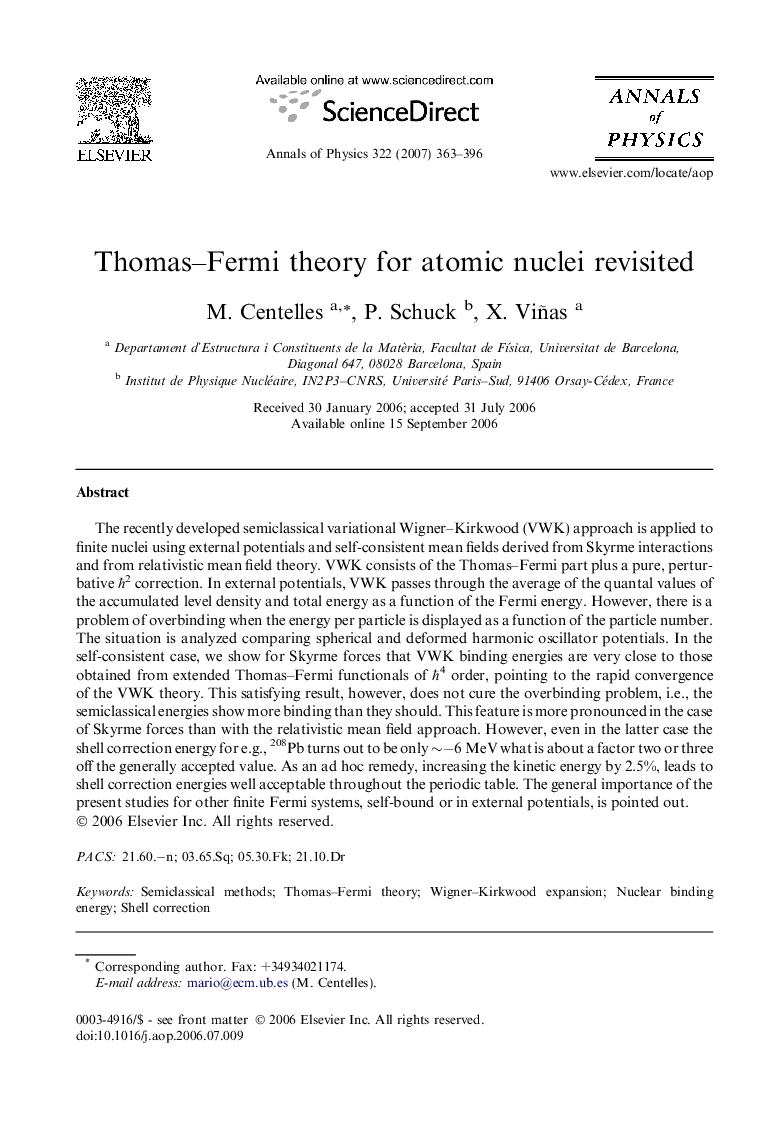| Article ID | Journal | Published Year | Pages | File Type |
|---|---|---|---|---|
| 1855350 | Annals of Physics | 2007 | 34 Pages |
The recently developed semiclassical variational Wigner–Kirkwood (VWK) approach is applied to finite nuclei using external potentials and self-consistent mean fields derived from Skyrme interactions and from relativistic mean field theory. VWK consists of the Thomas–Fermi part plus a pure, perturbative ℏ2 correction. In external potentials, VWK passes through the average of the quantal values of the accumulated level density and total energy as a function of the Fermi energy. However, there is a problem of overbinding when the energy per particle is displayed as a function of the particle number. The situation is analyzed comparing spherical and deformed harmonic oscillator potentials. In the self-consistent case, we show for Skyrme forces that VWK binding energies are very close to those obtained from extended Thomas–Fermi functionals of ℏ4 order, pointing to the rapid convergence of the VWK theory. This satisfying result, however, does not cure the overbinding problem, i.e., the semiclassical energies show more binding than they should. This feature is more pronounced in the case of Skyrme forces than with the relativistic mean field approach. However, even in the latter case the shell correction energy for e.g., 208Pb turns out to be only ∼−6 MeV what is about a factor two or three off the generally accepted value. As an ad hoc remedy, increasing the kinetic energy by 2.5%, leads to shell correction energies well acceptable throughout the periodic table. The general importance of the present studies for other finite Fermi systems, self-bound or in external potentials, is pointed out.
